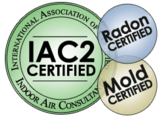Safety is at the forefront of every HomeTech Property Inspection. We want prospective home buyers or current homeowners to have a home that’s safe for their family. From latches to hot surfaces to sharp corners and stairways, we’re here to help ensure a home is safe for you and family members at every age.

About 2.5 million children are injured or killed by hazards in the home each year. The good news is that many of these incidents can be prevented by using simple child-safety devices on the market today. Any safety device you buy should be sturdy enough to prevent injury to your child, yet easy for you to use. It’s important to follow installation instructions carefully.
For older miniblinds, cut the cord loop, remove the buckle, and put safety tassels on each cord. Be sure that older vertical blinds and drapery cords have tension or tie-down devices to hold the cords tight. When buying new miniblinds, vertical blinds and draperies, ask for safety features to prevent child strangulation.

